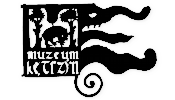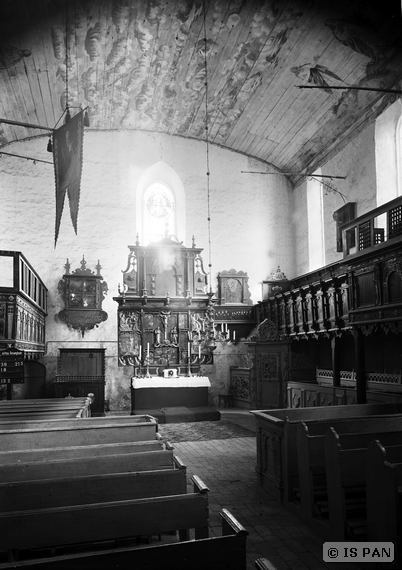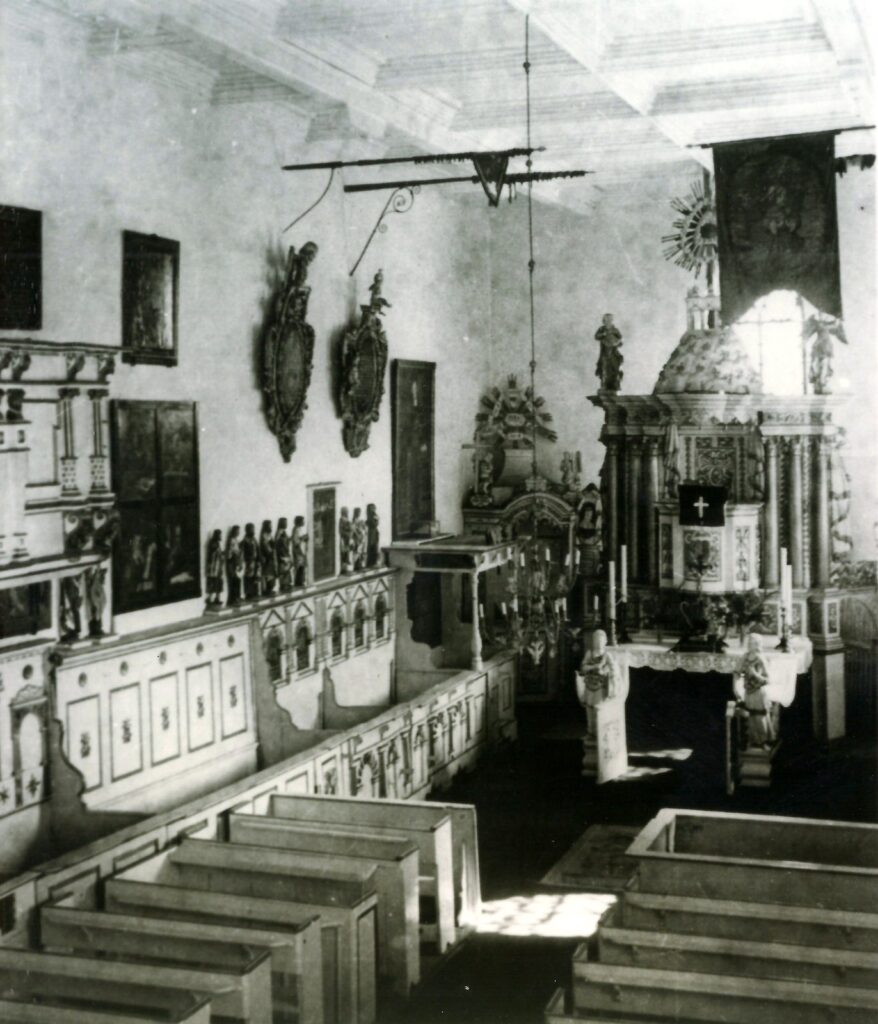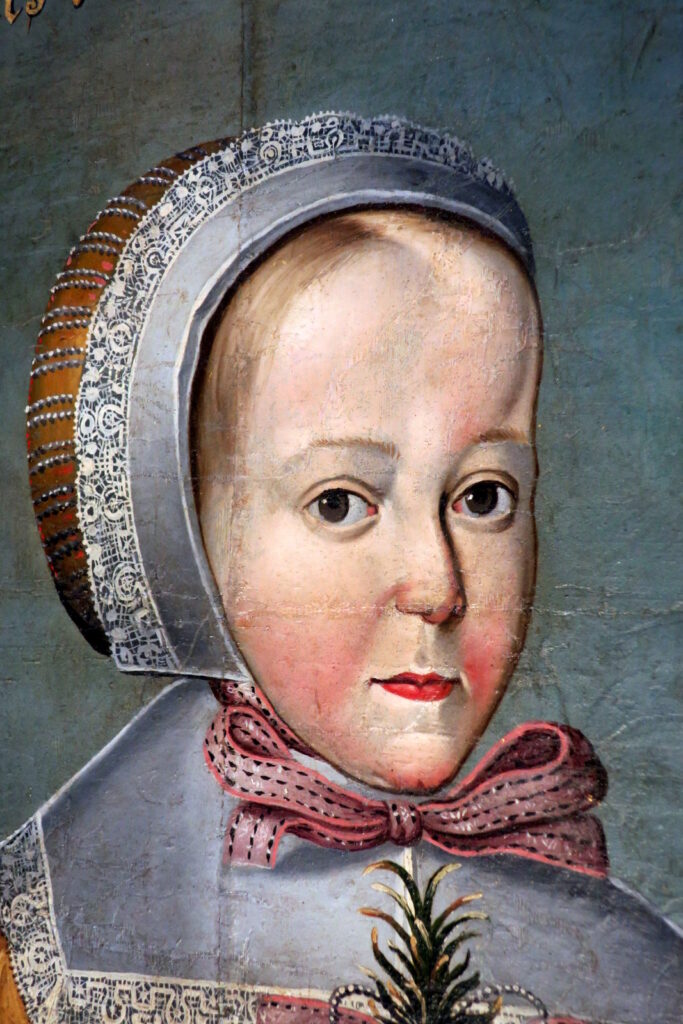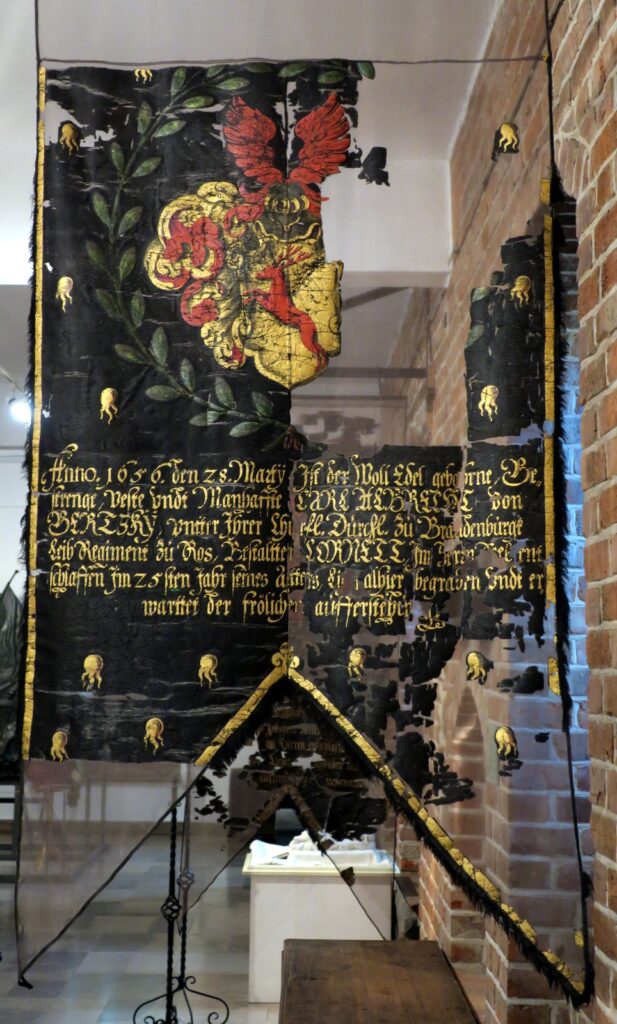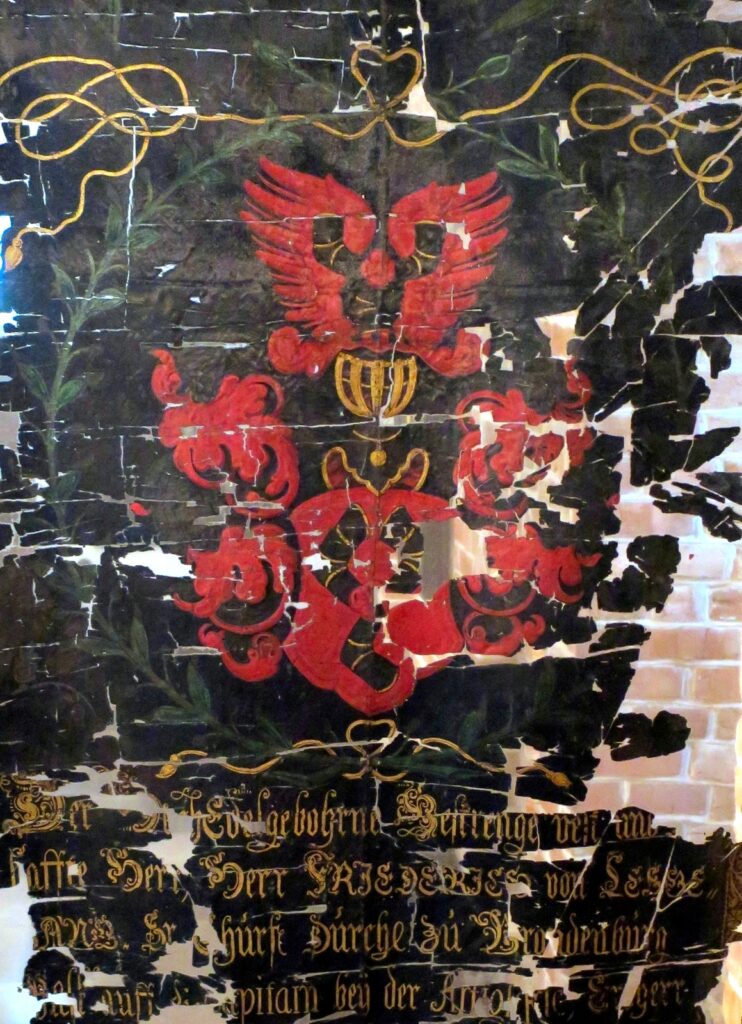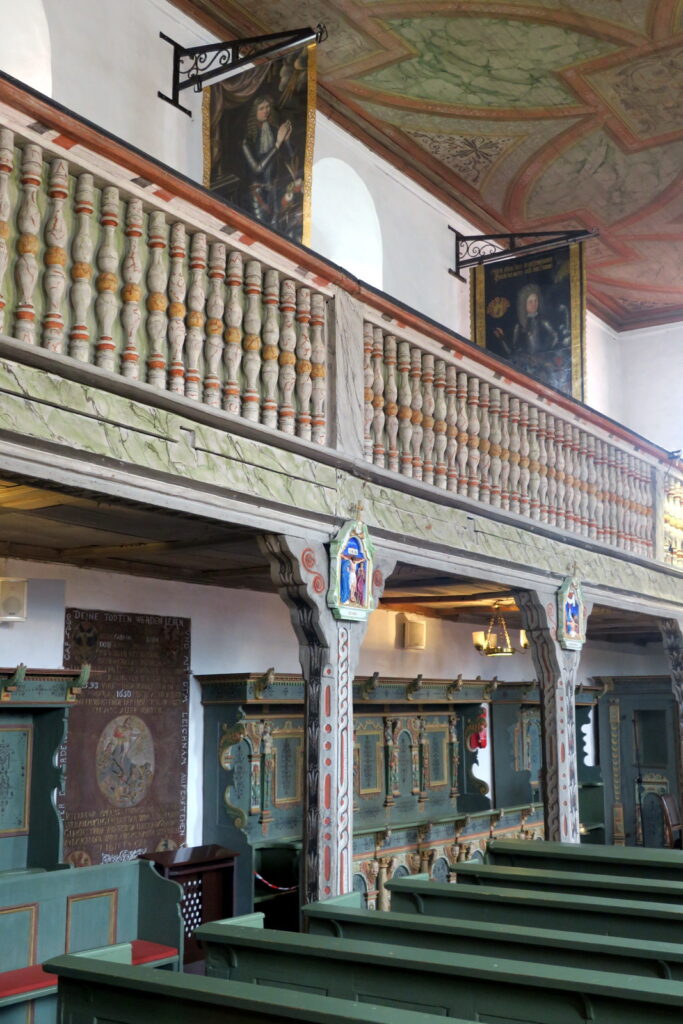
The museum in Kętrzyn has the largest collection of grave banners in Poland, including the only preserved banner in Europe dedicated to a child.
In the simplest terms, these are tombstones in the form of banners, which developed in the former Polish-Lithuanian Commonwealth probably as early as the 15th century and gained great popularity in Prussia, appearing until the end of the 18th century. Made of various materials (textiles, leather, sheet metal), they depicted the figure of a deceased knight, nobleman, or civil servant in full standing form, half-length or most often on his knees during prayer. In some cases, instead of the deceased, the coat of arms or the Crucifixion were depicted. The Mother of God was also sometimes depicted on banners, but not among Protestants.
These banners, as independent tombstones, were hung in church interiors near the burial place of a given nobleman in the side aisles, main naves, private chapels or even in the presbytery space. Sometimes, together with the statue of the deceased, they created an entire grave composition.
In the Polish-Lithuanian Commonwealth and Prussia, there were several hundred or even several thousand such banner tombstones. Only 21 of them have survived to this day – mostly kept in museums, but also still hanging in churches (like the two banners in the church in Szestno near Kętrzyn).
For centuries, they have been passing on the memory of the former inhabitants of this region to future generations.
The banner of Friedrich von der Groeben
in the church in Łabędnik, 1937
(photo by Kahl or Dietrich Pfleiderer)
Archival photograph from the collection of the former Provincial Heritage Office in Königsberg in the resources of Institute of Art of The Polish Academy of Sciences: Collections of Photographs and Survey Drawings
The location of the banners in the church in Galiny (1930s)
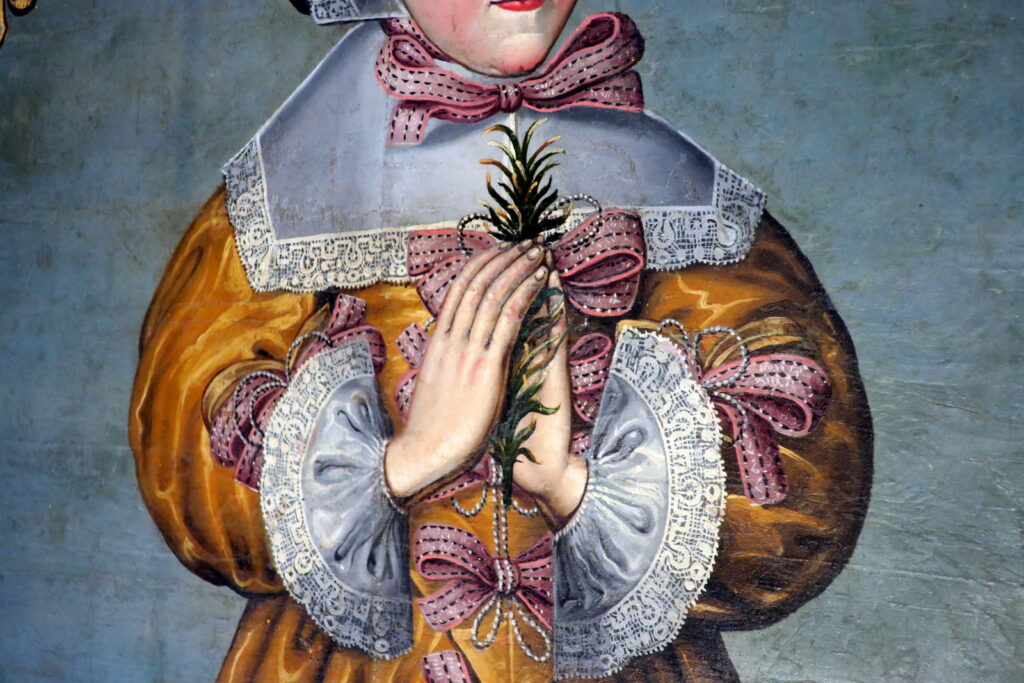 Details of the banner of Botho Ernst zu Eulenburg from Galiny
Details of the banner of Botho Ernst zu Eulenburg from Galiny
Grave banners from the collection of Wojciech Kętrzyński Museum in Kętrzyn
